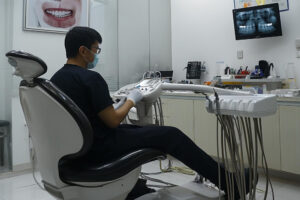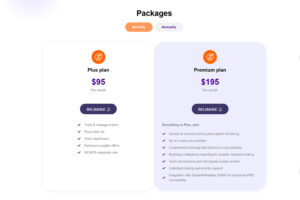In today’s rapidly evolving world of dental care, efficiency is no longer just a competitive advantage—it’s a necessity for long-term success. Dentists in Australia face mounting competition and increasing patient expectations, and adopting proven strategies from industries renowned for operational excellence can offer a powerful edge. Here, we’ll explore five key lessons from some of the world’s most efficient businesses, translating these insights into actionable strategies for running a streamlined, successful dental practice.
1. The Toyota Way: Systematic Optimization of Clinical Operations
Toyota has long been recognized for its Lean manufacturing philosophy, an approach that systematically reduces waste while maximizing productivity. At its core, the Toyota Way is about delivering more value to customers with fewer resources, achieved through continuous improvements in operations. Toyota famously cut production time for its vehicles from 30 days to just 10 days by eliminating bottlenecks and rethinking how it managed inventory, achieving near-zero waste and minimizing production costs.
How to Apply This in Your Practice
Dental practices can start by evaluating their current workflows to identify areas where processes slow down or create waste. One common bottleneck for dental practices is inventory management. By implementing an automated inventory system, practices can avoid the costly issues of over-ordering or running out of essential supplies. A dental practice that recently introduced this strategy reported that it cut inventory costs by 15% while reducing supply shortages that previously interrupted patient care.
Another effective Lean practice is optimizing appointment scheduling. Practices can benefit from reducing downtime and coordinating chair time to maximize productivity without sacrificing patient care quality. Practices implementing automated scheduling and reminder systems have seen reductions in no-show rates by as much as 30%, a change that dramatically improved patient flow.
Additionally, using visual management tools like kanban boards can help staff stay organized and reduce miscommunication. By taking these steps, practices create smoother workflows that result in both improved patient satisfaction and streamlined operations.
2. The Amazon Paradigm: Elevating Patient Experience Through Innovation
Amazon revolutionized the retail landscape by creating an unwavering focus on customer experience. By prioritizing convenience, personalization, and exceptional service, Amazon consistently delivers a frictionless experience, which has built an incredibly loyal customer base. The company’s commitment to innovation, from Prime delivery to personalized recommendations, has driven its rapid growth. Amazon’s metrics on customer satisfaction and retention set an industry benchmark, with annual revenue growth averaging around 20% due largely to this customer-centric approach.
How to Apply This in Your Practice
Dentists can learn from Amazon’s customer-first philosophy by simplifying the appointment process. An online booking system, for instance, allows patients to schedule appointments at their convenience, reducing administrative time for staff. Practices that have adopted online booking and automated reminders report up to a 10% increase in new patient appointments due to the ease of access.
Improving the in-office experience is another step towards enhancing patient satisfaction. Comfortable waiting areas, refreshments, and a warm, attentive front desk staff make a positive first impression. Personalizing each patient’s experience can also help foster loyalty. Staff should be trained to recognize returning patients and remember their preferences, making each visit feel familiar and welcoming. An example could be their favourite refreshment, or their favourite tv show on Netflix so that can be set up for their next appointment ahead of time.
Surveying patients after their visit provides invaluable feedback, helping practices pinpoint areas for improvement. One practice implemented post-appointment surveys and used the insights to make simple changes, like improving waiting times and enhancing front desk interactions. The result? A 15% increase in patient satisfaction scores and higher patient retention rates.
3. Google’s Data-Driven Methodology: Analytics-Based Practice Management
Google’s meteoric rise to dominance is due in large part to its data-driven approach. Through continuous analysis of user behaviour, Google fine-tunes its services, ensuring they better meet customer needs. This data-centric methodology allows Google to make informed, impactful decisions. The company has leveraged its data-driven approach to maintain a 92% share in the global search engine market, improving user satisfaction and operational efficiency.
How to Apply This in Your Practice
Dental practices can implement a similar data-driven approach by establishing Key Performance Indicators (KPIs) relevant to patient satisfaction and practice growth. Common KPIs for dental practices include patient retention rates, treatment acceptance rates, and the primary sources of referrals. By monitoring these metrics, practices can gain valuable insights into trends and areas needing improvement.
For example, in one of our practices we noticed a drop in retention rates for a particular practitioner doing a lot of surgery, and traced the issue to a lack of follow-up care. After adjusting their follow-up procedures, including setting up automated post-treatment check-ins, the practice saw retention rates climb back up by 20% within six months. Another one of our practices focused on treatment acceptance rates and found that by providing clearer explanations of procedures and financing options, we could improve patient understanding, leading to a 25% increase in treatment acceptance.
We also review the primary source of referrals actively. By doubling down on those referral sources and marketing strategies that are the most successful, you can reduce waste and increase new patients efficiently.
Regularly surveying patients to gauge their experiences also provides actionable data. If recurring issues, such as long wait times, come up frequently, practices can adjust schedules or expand appointment times to enhance the experience. By adopting a data-driven approach, practices can stay nimble and responsive to patient needs, continuously improving the overall patient experience.
4. Tesla’s Technological Integration: Advanced Systems Implementation
Tesla, the pioneer of the electric vehicle market, has transformed the automotive industry through its groundbreaking technology and automation. By integrating advanced features like autonomous driving, over-the-air software updates, and an efficient manufacturing process, Tesla has achieved remarkable gains in production efficiency, vehicle quality, and customer satisfaction. Tesla’s commitment to innovation has led to substantial growth, with vehicle deliveries increasing by over 40% in recent years, driven by a product that’s both high-tech and user-friendly.
How to Apply This in Your Practice
Dental practices can benefit significantly from incorporating technology to streamline operations and enhance patient care. For example, digital practice management softwares have revolutionised the way we store patient information, reducing time spent on manual entries and minimising errors. Adopting easy to use PMS systems and other dental digital technologies not only improve patient data access but also cut administrative workload, allowing more time for direct patient care.
Another aspect of technology adoption involves using digital stock ordering platforms. Many practices that have introduced solutions like Restocq have found that it significantly reduces the amount of time spent weekly on inventory management and ordering while reducing dollars spent. One 6 site practice group that implemented the system saw a saving of over $700,000 in one year while simultaneously saving their staff over 400 hours in admin time.
Investing in advanced diagnostic technologies such as digital radiography or intraoral scanners can improve the accuracy of diagnoses and enhance patient experience by reducing discomfort. These technologies also expedite the treatment process, with some practices reporting up to a 20% reduction in diagnostic times, creating a more efficient workflow. New diagnostic technologies, like Pearl Ai, which provide data on mis diagnosis and treatment acceptance within the practice can be extremely powerful tools in increasing production and patient education. Embracing technological advancements, as Tesla has done, allows dental practices to deliver faster, more accurate care while standing out in a competitive field.
5. The Cultural Excellence Model: Strategic Team Development
Companies like Google and Zappos have demonstrated that a positive workplace culture is essential to achieving exceptional service. These companies are well-known not only for their innovative products but also for their commitment to employee satisfaction. Google, for instance, has regularly been ranked among the best companies to work for, with a culture that promotes open communication, teamwork, and professional growth. Zappos, known for its unique “customer service first” ethos, maintains an impressive employee retention rate and high customer satisfaction by fostering an empowering work environment.
How to Apply This in Your Practice
Creating a supportive and collaborative culture within a dental practice can significantly impact patient care. Recognizing team achievements regularly, whether through small celebrations or performance bonuses, helps create a culture of appreciation and motivation. When our practice implemented regular team celebrations for hitting monthly targets, we saw a boost in staff morale and noticed that team members were more engaged and proactive with patients.
Ongoing professional development also plays a vital role. By encouraging staff to attend workshops, conferences, or training, practices can foster continuous learning and development. We recently invested in annual training for our 4 practice managers, and noticed not only enhanced team skills but also a noticeable improvement in patient interactions and overall treatment quality. In fact, 80% of our KPI targets for the year were met within 4 months of the course! Including profit margin targets and case acceptance rates.
Open communication is another hallmark of a healthy practice culture. Regular team meetings allow staff to voice challenges, share ideas, and discuss solutions, making everyone feel involved and valued. Weekly team meetings allow for communication gaps to be narrowed and improve overall patient satisfaction as the team works more cohesively. When staff members feel heard and valued, they are more likely to go above and beyond in their roles, contributing positively to the practice’s culture and reputation.
The lessons from some of the world’s most efficient businesses—streamlining operations, exceptional patient experience, data-driven decision-making, technological integration, and fostering a strong team culture—offer invaluable insights for dental practices looking to thrive. By implementing these strategies, practices can build a patient-centric environment that meets today’s expectations while laying a solid foundation for long-term success.
As the dental industry continues to evolve, adopting a mindset of continuous improvement and innovation will be key to staying ahead. Start by evaluating a specific area of your practice, such as patient experience or team development, and gradually implement one or two of these strategies. Efficiency is about more than just productivity; it’s about creating a practice where patients feel valued, staff are engaged, and the quality of care is continuously elevated.
Adapting these business lessons to a dental setting enables practices to navigate the complexities of today’s market confidently, ensuring a brighter future for both the practice and the patients they serve.





